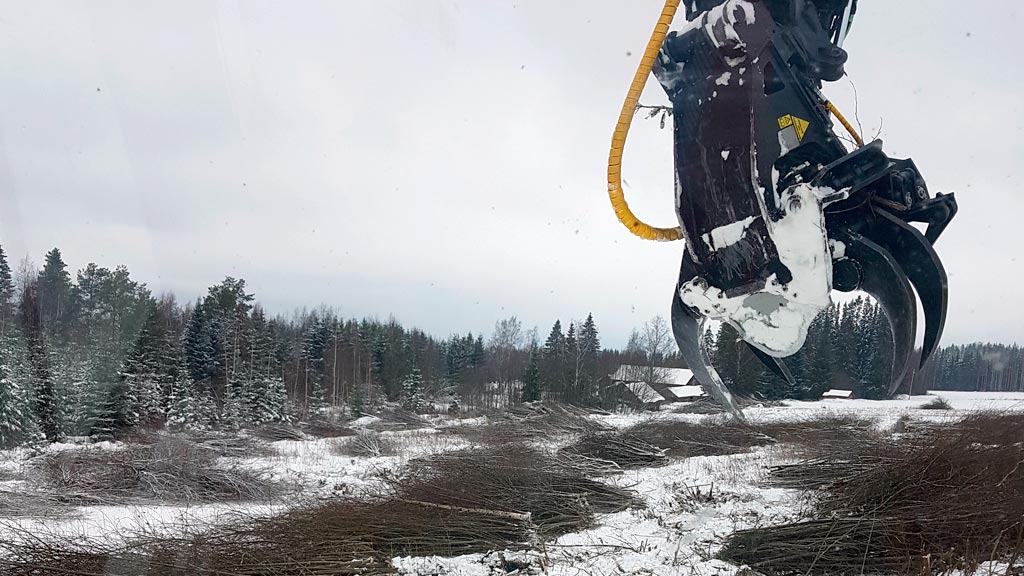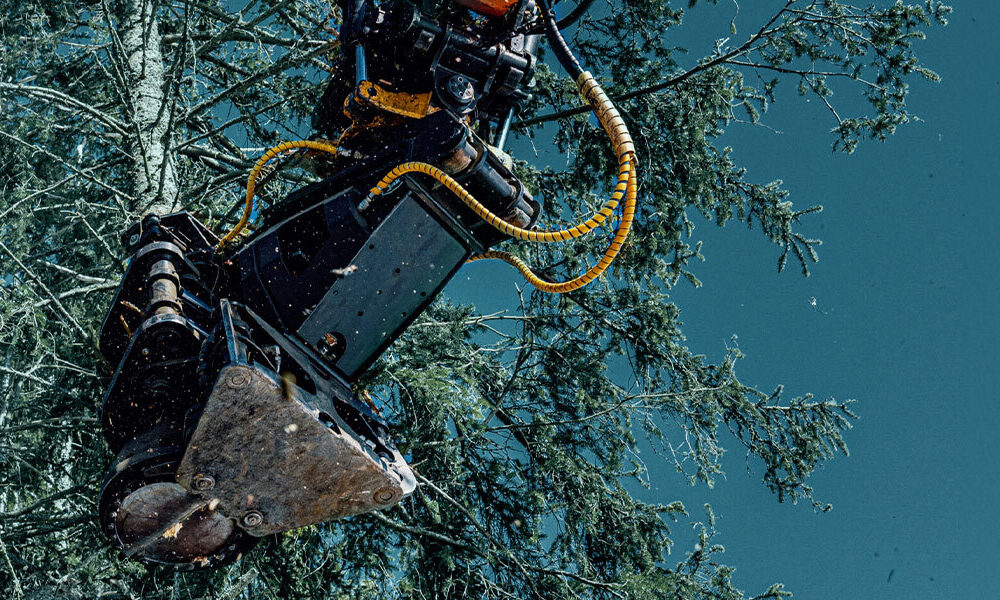12.01.2021
LL-Conetype:JAK-Energy Grab for additional work on excavator | Experiences with JAK-Energy Grab

Lauri Leppänen of LL-Konetyö, a civil engineering and forestry company, has been pleased with the purchase of the JAK tree shear. The tree shear gives machine operators more opportunities to earn extra income, especially in winter.
Excavators are easily underused in winter when the ground is frozen and it may not be practical to carry out earthworks. However, energy wood harvesting can be done easily in winter. The wood is light and the visibility is not disturbed by the abundant foliage. The snow-white ground also helps to distinguish the tree from the background and other vegetation.
The company’s basic machine is an 18-tonne Hitachi excavator with a bucket conveyor, which Leppänen tries to keep in constant use all year round. For this type of machine, Leppänen has also purchased a JAK-300 tree shear, which is capable of felling even slightly larger trees.

Diversified energy wood harvesting
LL-Konetyö harvests energy wood mainly from fields and roadsides, as well as from young forest restoration sites. Ultimately, the wood harvested by the tree shear ends up as a raw material for domestic thermal energy. The company’s operations are located in Joutsa and neighbouring municipalities, where there is plenty of timber to be harvested for energy wood.
In young forest restorations with a lot of small diameter trunks, a mass treatment device is an absolute must. The batch processor significantly increases efficiency by allowing up to ten logs to be collected at a time in the chute. When the chute is full, the trees can be lifted in one easy movement along the roadway. This makes the work more comfortable and, of course, more productive.
Occasionally, larger trees may need to be felled. However, JAK Tree Shear will also cut down even logs in a controlled manner. For example, it is safe to remove trees along the edge of power lines, as the tree to be felled remains well upright under the tight grip of the grapple.
The cut-off blade of the grab has also been a positive surprise. There is a new spare blade for the tree shear, but there has been no need to use it as the original blade is still in full swing. It has withstood the occasional hit on a rock, and has required nothing more than the occasional flick of a grinding wheel to sharpen it. Leppänen adds that he also uses the grapple without the blade for lifting stones or poles, for example.
“I have to say that I am very happy with my acquisition”
– Leppänen concludes. You can follow the company’s activities on LL-Konetyö’s Facebook page

